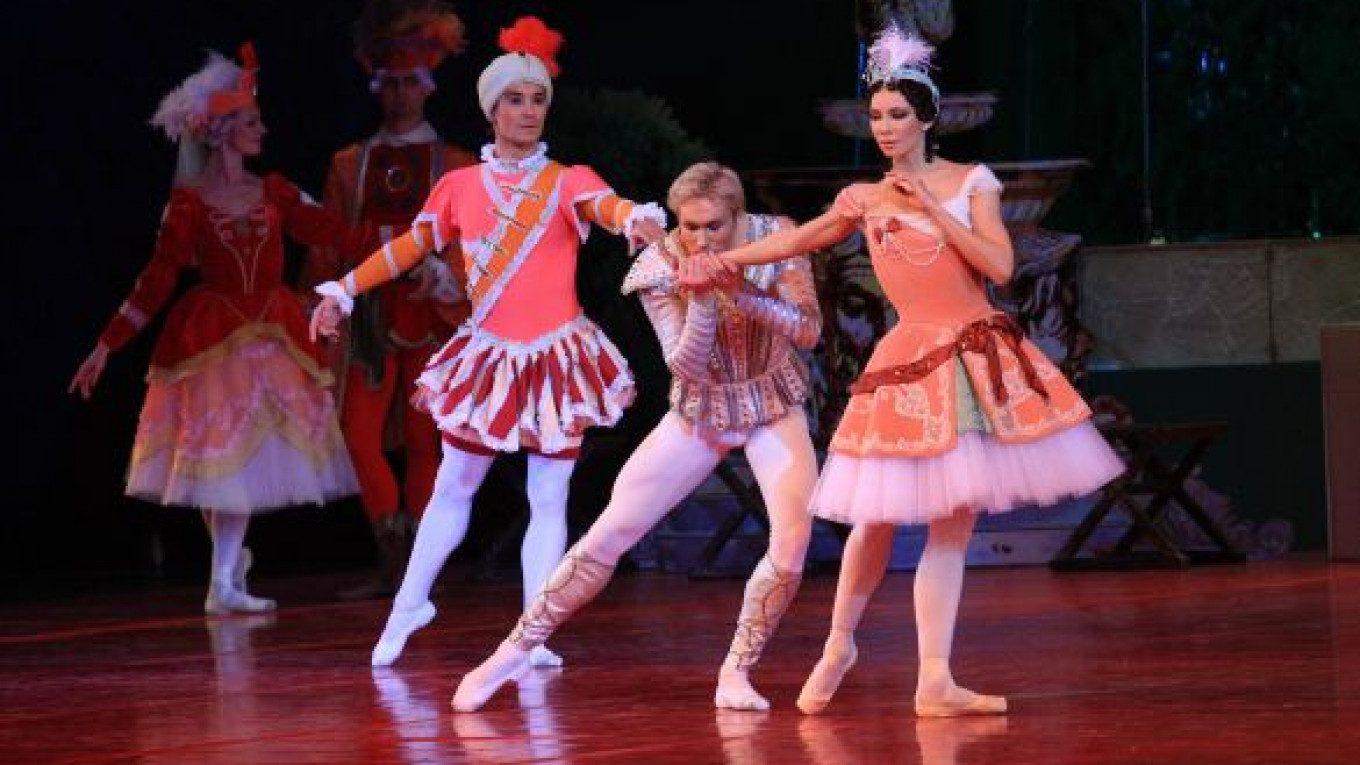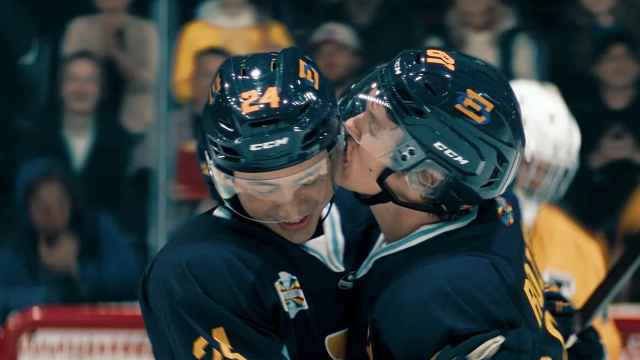ST. PETERSBURG — A century after the most daring artistic minds of Russia joined forces under the impresario Sergei Diaghilev and took Europe by storm with the arts extravaganza that came to be known collectively as the Russian Seasons, the ballets are returning to the city of their birth.
As part of the 21st-Century Russian Seasons in Honor of Maris Liepa ballet festival, sets, costumes and decorations designed by artists such as Alexandre Benois, Leon Bakst and Nikolai Roerich for the original stagings have been painstakingly recreated.
The festival is dedicated to what would have been the 75th birthday of the award-winning Soviet-Latvian dancer and choreographer Maris Liepa.
"The Russian Seasons were born here," said Liepa's son Andris, himself a former star dancer at both the Mariinsky and Bolshoi theaters, at a news conference devoted to the festival being held in his father's honor. Andris Liepa has devoted a large part of his career to resurrecting the Russian Seasons ballets in their original form, together with the Kremlin Ballet troupe and other international ballet stars.
"Everything Diaghilev took to Paris, everything that later came to be considered as French, was created here: The costumes, the sets, even the rehearsals were held here. So St. Petersburg should see what we are doing," Liepa said.
"After the revolution, virtually all the works went to the West, and the best representatives of Russian culture — all the artists, composers, choreographers — all went to the West. Very few remained, and those who did couldn't officially say they were the heirs to [choreographer Mikhail] Fokin.
"Only in 1992, thanks to the Lunacharsky Library [now the St. Petersburg State Theater Library], was I able to see things that Mikhail Fokin had sent to Leningrad. They hadn't been seen by anyone since 1957. When perestroika happened, I was the first person allowed to see these unique things," he said.
The festival opens April 2 with a gala concert at Oktyabrsky Concert Hall featuring one-act ballets that Maris Liepa danced in during his career. The concert will begin with "Chopiniana," a one-act ballet choreographed by Fokin to music by Frederic Chopin for Diaghilev's Russian Seasons. The lead role will be danced by Bolshoi Ballet star Nikolai Tsiskaridze. "The gala evening is a choreographic homage to my father," Liepa said. "'Chopiniana' was his favorite ballet. Our version recreates the decorations designed by Alexandre Benois."
Andris' sister Ilze will also take part in the tribute to her father, dancing the lead role in the ballet suite "Polovtsian Dances" on the same evening, in a staging that uses replicas of the costumes designed by Roerich.
For the three remaining evenings of the festival — April 3, 4 and 5 — the action moves to the scene of the Mikhailovsky Theater, where the ballets "Le Pavillon d'Armide," which opened Diaghilev's Russian Seasons in 1909 at Paris' Theatre du Chatelet, and "Scheherazade" will be performed on three consecutive nights.
"Scheherazade," based on the story of "One Thousand and One Nights" and choreographed by Fokin to music by Rimsky-Korsakov, was one of the first Russian Seasons ballets to be recreated by Andris Liepa. His staging uses decorations based on those designed by Bakst, and once again stars Tsiskaridze and Ilze Liepa.
"Le Pavillon d'Armide," in which a young man dreams that he enters a tapestry hanging on his wall, was also shown at the first Diaghilev. P.S. festival held in the city in 2009. But while that staging was a brand new version choreographed by the U.S. choreographer John Neumeier, for the production to be shown in the city next week, costumes and decorations have been painstakingly recreated from the original show, working from sketches by Benois and from photographs. The original choreography was lost years ago, but Lithuanian choreographer Jurijus Smoriginas has created new moves to the original music by Nikolai Tcherepnin.
"When we called Nikolai Tcherepnin's grandson in the United States, he said, 'In 25 years, you're the first people to get in contact and ask us for material from that ballet.' That's a real shame," Liepa said.
The names of Diaghilev, Fokin, Nijinsky and many other leading lights of Russian ballet were dimmed in their native country for decades after they chose to stay in the West following the revolution. But now, with the Diaghilev. P.S. festival set to become a regular event and projects such as Liepa's, Russian audiences are getting more and more opportunities to see what their country gave the world a century ago. The ballets are, however, not only interesting from a historical point of view.
"It's hard to believe that 'The Firebird' and 'Scheherazade' are a hundred years old," Liepa said. "Diaghilev was several generations ahead. No one who sees them now says they're not modern."
The 21st-Century Russian Seasons in Honor of Maris Liepa ballet festival runs from April 2 to 5 at Oktyabrsky Concert Hall and Mikhailovsky Theater. For more information, see and .
A Message from The Moscow Times:
Dear readers,
We are facing unprecedented challenges. Russia's Prosecutor General's Office has designated The Moscow Times as an "undesirable" organization, criminalizing our work and putting our staff at risk of prosecution. This follows our earlier unjust labeling as a "foreign agent."
These actions are direct attempts to silence independent journalism in Russia. The authorities claim our work "discredits the decisions of the Russian leadership." We see things differently: we strive to provide accurate, unbiased reporting on Russia.
We, the journalists of The Moscow Times, refuse to be silenced. But to continue our work, we need your help.
Your support, no matter how small, makes a world of difference. If you can, please support us monthly starting from just $2. It's quick to set up, and every contribution makes a significant impact.
By supporting The Moscow Times, you're defending open, independent journalism in the face of repression. Thank you for standing with us.
Remind me later.






